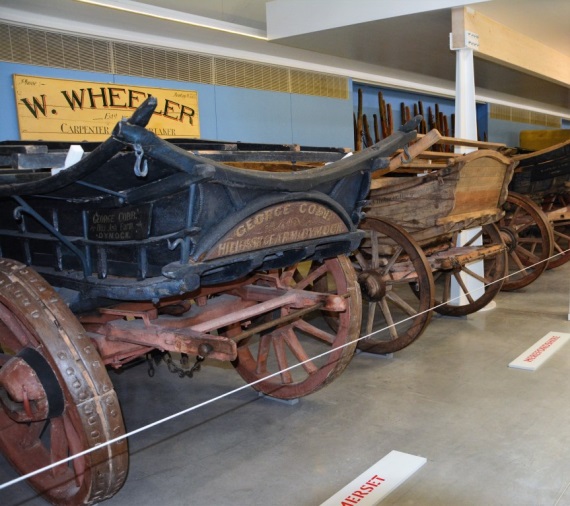“The Wagon Walk” at the Museum of English Rural Life (MERL) in Reading.


Wagon enthusiasts will have much to see and enjoy at The MERL. The strength of collections, whether objects, books, records or photographic archives, is outstanding, fully deserving of their Designated Status. Very rarely do objects and related archives come together quite so closely in one place as here.
A particular feature is the museum’s collection of traditional farm wagons and carts, which now enjoys a focused display entitled “The Wagon Walk”.


[There is a nice link here to see a glimpse of how many ways you can make a wheel that might have belonged to one of these wagons. For more on the many skills, from handwork to the latest in digital tools, check out this blog post as a perfect complement to David’s article here.]
Here is gathered the major part of the museum’s object collection of 22 English farm wagons, four carts and a timber carriage, the largest assemblage of English examples on public display anywhere in the country.
What is most immediately striking is the variation in size and detail in the design of each vehicle, when compared so easily side by side. Given their essentially fairly standard functional purpose, each one enjoys to a greater or lesser degree, graceful curves and smooth lining, evidence of skilled local craftsmanship and reflecting continuing traditions in design, labelling and colour schemes. Not to exaggerate it, but still, at their best, these wagons (and to a lesser extent carts, too) are immensely pleasing in their localisation and sense of place.


The evidence of all this can be found in the still-standard reference work, The English Farm Wagon, published by the University of Reading in 1961 and written by then Assistant Keeper J. Geraint Jenkins, who had undertaken a recording project ten years previously to reveal what had survived from around the country, and from where donations might be sought to build up the then-new collection. The outcome was a representative gathering, impressive if not fully comprehensive, of all variations in England. The museum is right in seeking to show it all in one place to best advantage.


The West Country counties from Cornwall to Gloucestershire are well represented here and serve as good exemplars to share now. They also show a territorial overlap between the two distinctive types of vehicle design, a relatively shallow bow design flowing over the rear wheels, and the deeper box design, more recognisably standard with its origins in eastern England and into the near continent. A discussion of the thorny issues as to their origin requires much more space that is available in this short article!
David Viner has been a MERL Fellow and is the author of the Shire Library album Wagons and Carts (2008).
